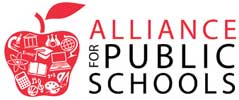The Free Application for Federal Student Aid (FAFSA), a lifeline for college-bound students seeking financial assistance, has recently undergone an overall. When the Department of Education first announced the “Better FAFSA”—a revamped version of the application—it was met with optimism. Officials assured students and colleges that this new form would simplify the aid application process and potentially increase federal funding for low-income families. Fast forward nearly a year, and the reality is far from rosy. The rollout of the new FAFSA has been plagued by technical glitches, delays, and unresolved issues.
The FAFSA overhaul began in December 2020, in the final days of the Trump administration, when Congress passed the FAFSA Simplification Act as part of the end-of-year budget. The law required the form to go from 100 questions to 40 and changed the aid eligibility formula. According to Inside Higher Ed, “The new law also significantly expanded Pell Grant eligibility and lifted a 26-year ban on Pell for incarcerated students, along with a number of other changes aimed at making aid easier to access.”
The soft launch in late December was anything but smooth. Technical hiccups persisted, preventing the processing of completed applications. Colleges and universities were left in limbo, unable to send out aid packages to students eagerly awaiting financial clarity. The blame game ensued. The U.S. Department of Education pointed fingers at Congress, claiming they denied additional resources. Meanwhile, congressional Republicans accused the department of prioritizing student debt relief over the FAFSA overhaul. In addition, the massive FAFSA project was overshadowed by other departmental priorities of the USDOE, including school reopenings during the pandemic. The overhaul progressed slowly, and advocates worried that the new form wouldn’t be ready in time.
Consequences for Students
Families remain in the dark about their college payment options, and low-income and first-generation students may become discouraged from pursuing higher education altogether. In addition,colleges have been significantly delayed creating financial aid packages for students.
For students who are able to access the form, they report that it’s faster, less confusing, and much more streamlined. Lawmakers are calling for hearings, and investigations are underway. Students deserve better, and it’s time to untangle this mess.







